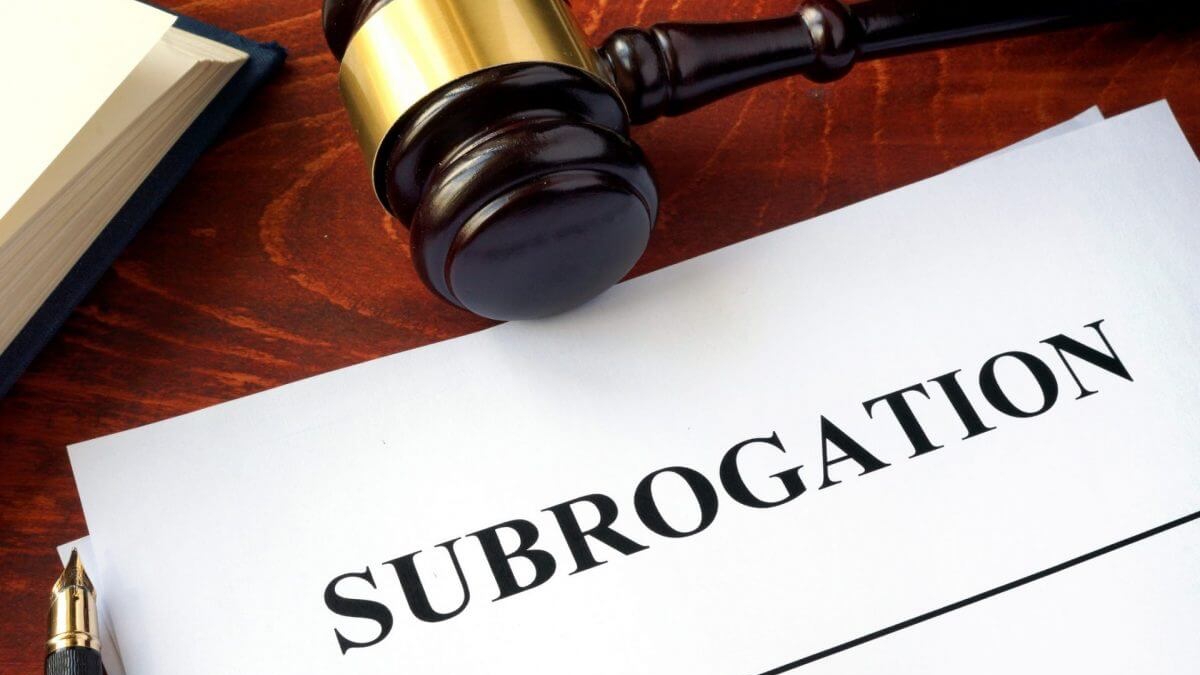
In the subrogation process, an auto insurer recoups its costs from a responsible party’s insurance company. Through subrogation, drivers can receive payouts before opposing insurers agree who was responsible.
Table of Contents
How Subrogation Works
The process is handled by insurers, and in most cases, drivers don’t get involved. An insurer must inform its policyholder if there are questions about insurance subrogation. If it happens, any deductible paid must be included in the amount the insurer asks to recover. When insurers elect not to subrogate, a driver can request reimbursement from the at-fault party.
Under most insurance agreements, after a claim is filed, a policyholder cannot act in ways that would affect the insurer’s recovery rights. Therefore, they can’t sign agreements that release at-fault parties from liability. Subrogation is simple in most, but not all, instances. In the sections below, we’ll outline how subrogation works when things get complicated.
If the At-Fault Driver is Uninsured
When a responsible party has no insurance, a claimant may be able to rely on their own policy for coverage. Then, the company will sue the at-fault driver for reimbursement of the deductible and their costs. Because such a suit is filed against an individual—not a company—it may take longer and is less likely to be successful.
When Drivers Share Responsibility
Depending on the state’s laws, if drivers share blame for an incident, insurers may be able to recover some money through subrogation. The recoverable amount is in proportion to a policyholder’s degree of responsibility. For instance, if the other person is 70% at fault, your insurer would recover 70% of the costs paid.
Partial Recoveries
In certain cases, insurance companies can only recover half of their losses from an at-fault party. Known as a partial recovery, the recouped costs are divided between the drivers’ insurance companies based on the ratio of the deductible to the amount paid for repairs.
When the Policyholder is Not Responsible
If an insurer files a subrogation claim against an at-fault party or their insurance company, the claimant has little involvement. When subrogation is not pursued, drivers can legally sue responsible parties for costs incurred.
When You’re to Blame
When a policyholder is an at-fault party, their insurer handles the subrogation process. However, if you’re in an accident and are uninsured, the other driver or their insurer can sue.
How Long the Subrogation Process Takes
The average subrogation claim takes approximately six months to settle, though it may take a little longer depending on the severity and complexity of the auto accident. Subrogation claims typically take longer when they involve multi-car accidents, personal injuries, or events where it’s difficult to determine responsibility.
Subrogation Waivers
A subrogation waiver is a legal agreement that keeps a claimant’s insurance company from pursuing the responsible party for repayment. Usually, the at-fault driver will ask for a waiver when they want to settle the case directly. Some insurers do not allow policyholders to waive their right to subrogate, and most require notification before a waiver is signed. Be sure to read the policy documents carefully before purchasing it or signing a waiver.
Subrogation Help and Advice is Available
Whether you’re the at-fault party or the one who’s pursuing a claim, subrogation plays an important role in many auto accident cases. Call or click today to learn how subrogation may affect the outcome of your case.